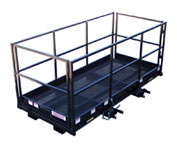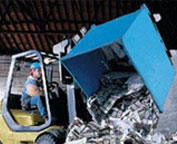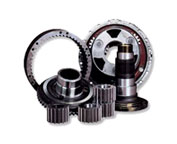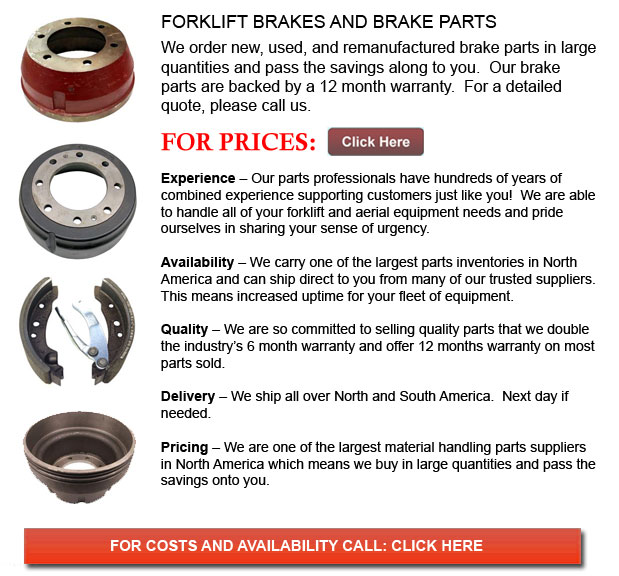
Forklift Brakes - A brake drum is in which the friction is supplied by the brake pads or brake shoes. The shoes or pads press up against the rotating brake drum. There are a few various brake drums types along with certain specific differences. A "break drum" would usually refer to if either shoes or pads press onto the inner surface of the drum. A "clasp brake" is the term utilized to describe if shoes press against the outside of the drum. One more type of brake, referred to as a "band brake" utilizes a flexible band or belt to wrap around the exterior of the drum. Whenever the drum is pinched in between two shoes, it can be referred to as a "pinch brake drum." Like a standard disc brake, these types of brakes are rather uncommon.
Prior to 1955, old brake drums needed consistent adjustment regularly in order to compensate for drum and shoe wear. "Low pedal" or long brake pedal travel is the dangerous end result if adjustments are not executed sufficiently. The motor vehicle could become hazardous and the brakes could become useless whenever low pedal is mixed together with brake fade.
There are quite a few various Self-Adjusting systems utilized for braking obtainable nowadays. They can be classed into two individual categories, the RAI and RAD. RAI systems are built-in systems that help the tool recover from overheating. The most popular RAI manufacturers are AP, Bendix, Lucas, and Bosch. The most famous RAD systems include Ford recovery systems, Volkswagen, VAG, AP and Bendix.
Self-repositioning brakes generally use a device that engages just whenever the vehicle is being stopped from reverse motion. This stopping approach is acceptable for use where all wheels use brake drums. Nearly all vehicles nowadays utilize disc brakes on the front wheels. By working only in reverse it is less possible that the brakes will be adjusted while hot and the brake drums are expanded. If adjusted while hot, "dragging brakes" could occur, which raises fuel expenditure and accelerates wear. A ratchet tool which becomes engaged as the hand brake is set is one more way the self adjusting brakes can work. This means is just appropriate in functions where rear brake drums are used. When the parking or emergency brake actuator lever exceeds a specific amount of travel, the ratchet developments an adjuster screw and the brake shoes move toward the drum.
Placed at the base of the drum sits the manual adjustment knob. It could be adjusted making use of the hole on the other side of the wheel. You would have to go underneath the vehicle using a flathead screwdriver. It is extremely important to adjust every wheel equally and to move the click wheel properly as an uneven adjustment can pull the vehicle one side during heavy braking. The most effective method to be able to make certain this tiresome job is accomplished carefully is to either raise each wheel off the ground and spin it by hand while measuring how much force it takes and feeling if the shoes are dragging, or give each one the exact amount of manual clicks and then perform a road test.
![]() Click to Download the pdf
Click to Download the pdf
Forklift Parts








Lift Parts Express
TOLL FREE: 1-888-695-7994
Atlanta, Georgia
forkliftpartsatlanta.com
Email Us
About Us



